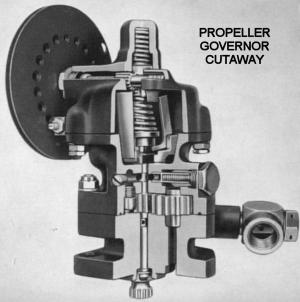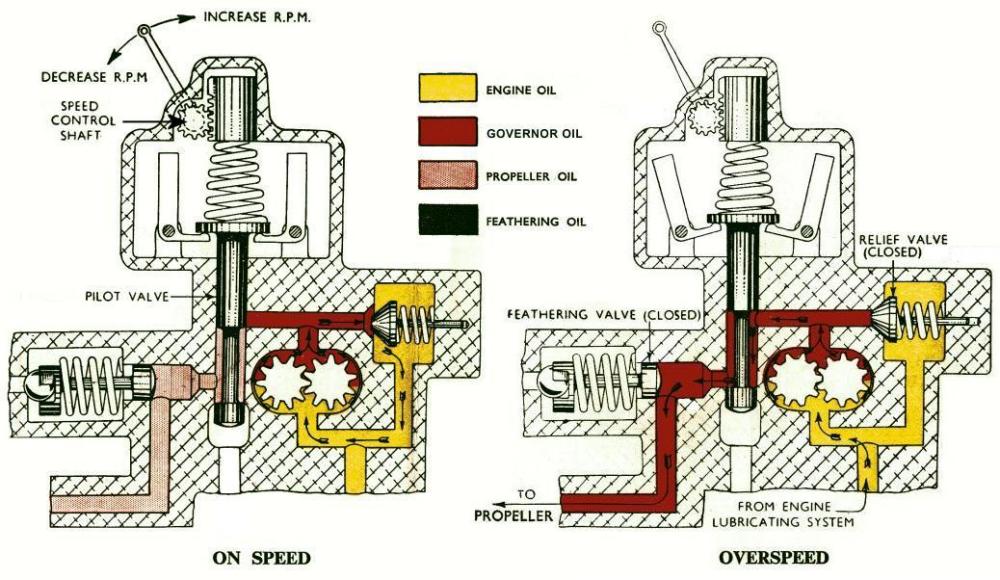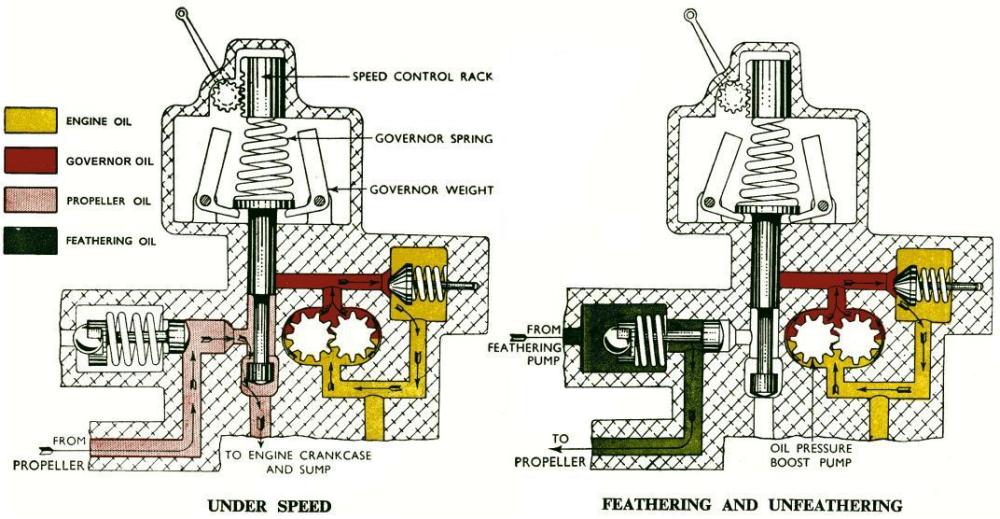
Hydraulic Propeller Governors
 |
Constant-speed propeller governors keep engine rpm constant by varying the propeller blade pitch. Hydraulic governors accomplish this by controlling the flow of engine oil through hydraulic mechanisms in the propeller. The Hamilton Standard governor is described. Other hydraulic governors are similar. |
Operation

Governor flyweights and the attached pilot valve tend to adjust themselves to the ON SPEED (neutral) condition. The rpm at which the ON SPEED condition is reached depends on governor spring force, which is controlled from the cockpit. Since the governor is driven through gearing from the crankshaft, governor rpm is proportional to engine rpm. When the governor is in the ON SPEED condition centrifugal force generated by the flyweights is balanced by governor spring force and the pilot valve exactly covers ports in the boost pump drive shaft so that no oil can get in or out of the propeller; consequently the pitch does not change.
If engine speed starts to increase the governor will react to the OVERSPEED condition. Flyweight force exceeds governor spring force, lifting the pilot valve and allowing high-pressure oil to enter the propeller. This increases the propeller pitch and brings the engine rpm back to the selected value. As engine and governor rpm decrease the governor returns to the ON SPEED condition.

If engine speed starts to decrease the governor will react to the UNDERSPEED condition. Governor spring force exceeds flyweight force, dropping the pilot valve and allowing high-pressure oil to exit the propeller. This decreases the propeller pitch and brings the engine rpm back to the selected value. As engine and governor rpm decrease the governor returns to the ON SPEED condition.
When the cockpit feathering button is pressed the feathering pump is actuated and supplies high-pressure oil to the base of the propeller governor. The feathering oil acts on the spring-loaded feathering valve, which routes feathering oil to the propeller in place of governor oil.